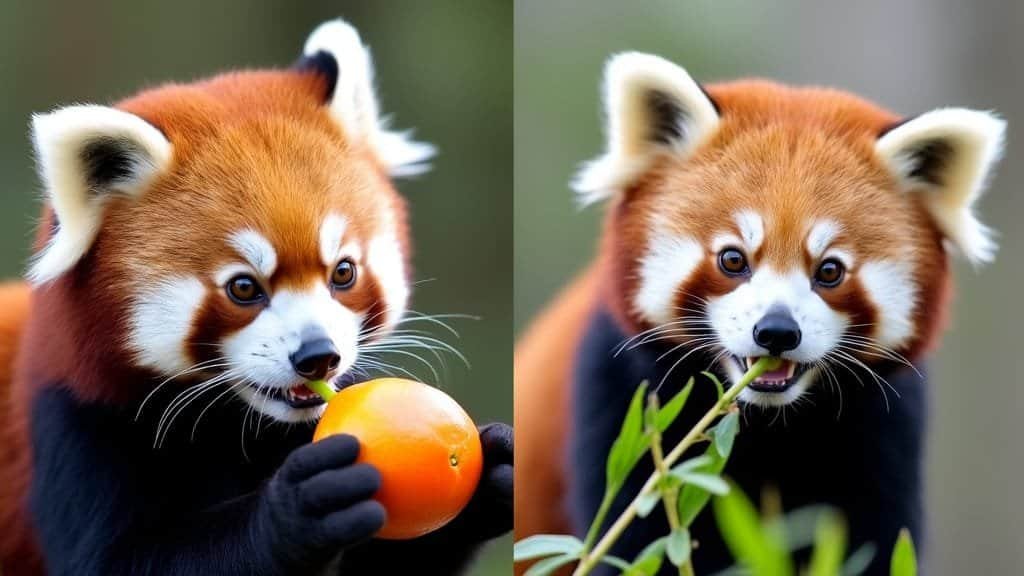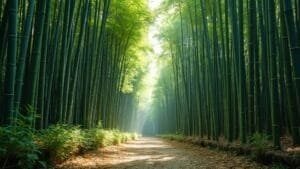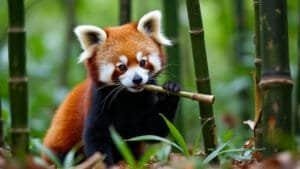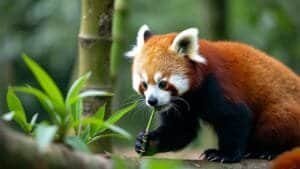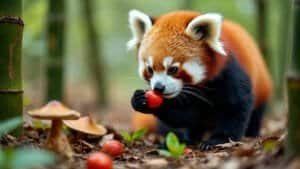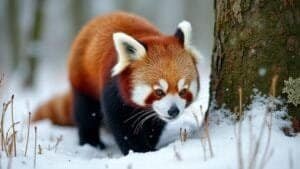A red panda’s diet undergoes significant changes between summer and winter as food availability, temperature, and metabolic needs shift with the seasons. While bamboo remains their primary food source year-round, red pandas consume different parts of the plant based on what is most nutritious and accessible. In summer, they prefer fresh bamboo shoots and young leaves, which are rich in protein and water, making them easier to digest. They also supplement their diet with fruits, flowers, and insects, taking advantage of seasonal variety
In winter, bamboo shoots disappear, forcing red pandas to rely on mature leaves and stalks, which are tougher, lower in nutrients, and harder to digest. To compensate, they increase their feeding time and conserve energy by reducing activity levels. Unlike true hibernators, red pandas lower their metabolic rate to survive on lower-quality food during colder months
This article explores the seasonal dietary shifts of red pandas, examining how they adjust their food intake, metabolism, and behavior to cope with environmental changes. We will also discuss how climate change and habitat loss are impacting their ability to find food throughout the year
Seasonal Changes in the Red Panda’s Diet
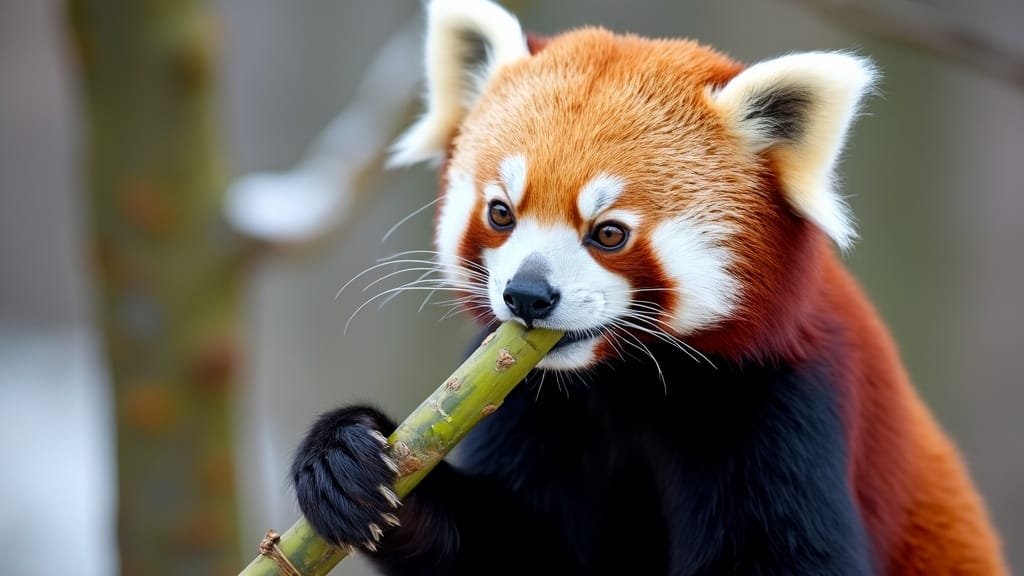
The red panda’s diet shifts between summer and winter as bamboo availability and nutritional quality change. While bamboo remains the primary food source year-round, red pandas adjust their feeding behavior and food selection based on what provides the most energy at different times of the year
What Foods Do Red Pandas Eat in the Summer?
During the summer months, red pandas have access to a wider variety of food sources, allowing them to consume more nutrient-rich foods compared to winter. Bamboo remains their staple, but they prefer tender bamboo shoots and young leaves, which contain higher protein and water content than mature leaves. Shoots emerge in the spring and early summer, providing an easy-to-digest and energy-rich food source
In addition to bamboo, summer offers a variety of wild fruits, berries, and flowers, which provide essential vitamins and sugars. Fruits such as apples, raspberries, and wild figs help red pandas replenish energy and stay hydrated. According to a study by Wei et al. (Journal of Mammalogy, 2014), red pandas increase their fruit intake in late summer, possibly to store extra energy before food supplies become scarcer in winter
Summer also presents an opportunity for red pandas to consume insects, bird eggs, and small mammals, although these foods make up a very small portion of their diet. The availability of these supplementary foods allows red pandas to consume a more balanced diet, supporting overall health before they transition to winter conditions
How Does a Red Panda’s Diet Change in Winter?
Winter presents greater challenges for red pandas, as bamboo shoots and fresh leaves become less available. They are forced to rely on mature bamboo leaves and stalks, which contain less protein and more fiber, making them harder to digest and lower in nutritional value. Because of this shift in food quality, red pandas must spend more time feeding to obtain enough energy
In addition to bamboo, some red pandas consume moss, lichen, or roots, though these offer little nutritional value. Unlike in summer, they have fewer opportunities to supplement their diet with fruits or protein sources, which means they must rely almost entirely on bamboo. As a result, red pandas become less active, reducing movement and conserving energy to offset the lower calorie intake
A study by Yonzon et al. (Biological Conservation, 1987) found that red pandas in colder regions may shift their feeding locations in winter, moving to lower elevations where bamboo growth is more accessible. This limited migration helps them survive, but it also makes them vulnerable to habitat loss, as human development continues to fragment their natural habitat
Why Do Red Pandas Prefer Bamboo Shoots in Summer?
Bamboo shoots provide higher protein, water, and digestible carbohydrate content compared to mature leaves and stalks. This makes them an ideal food source during warmer months, as they offer more energy with less effort. Shoots are also softer and easier to chew, meaning red pandas expend less energy during feeding
As bamboo shoots disappear in late summer, red pandas gradually shift their diet to younger bamboo leaves, which still contain some nutrients but require more effort to chew and digest. By the time winter arrives, they are entirely dependent on mature leaves and stems, which are significantly lower in nutrients. This change in diet impacts their feeding time and energy levels, forcing them to adapt through metabolic adjustments and behavioral changes
For more information on how red pandas adapt to seasonal food availability, visit the Red Panda Network’s article on red pandas in winter
Nutritional Challenges and Feeding Strategies
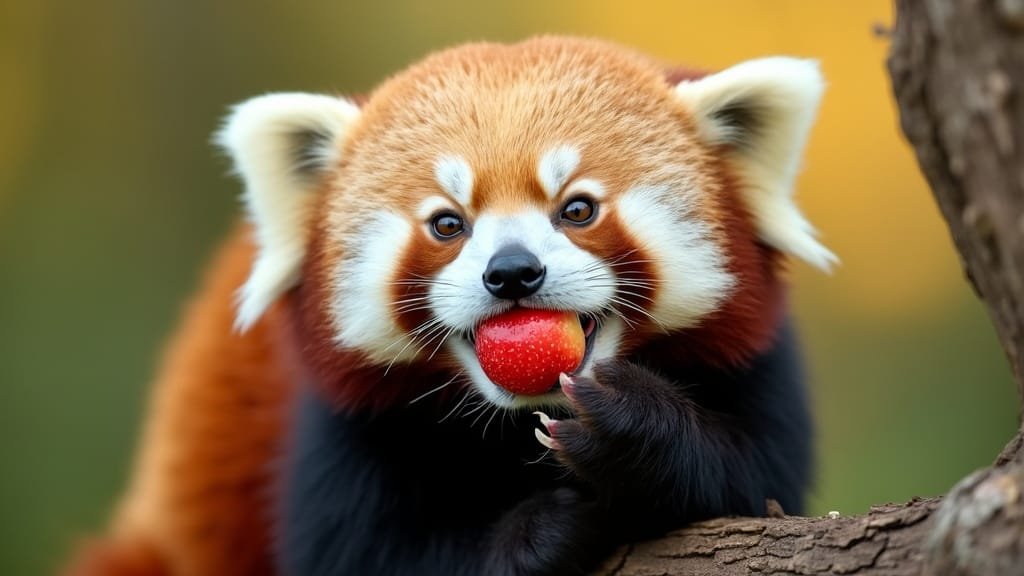
As the seasons change, red pandas must adjust their feeding habits to cope with fluctuations in bamboo quality and food availability. While summer provides a more varied and nutrient-rich diet, winter brings greater challenges, requiring red pandas to spend more time feeding and conserve energy
What Nutritional Challenges Do Red Pandas Face in Winter?
Winter presents several difficulties for red pandas, primarily due to the decline in bamboo shoot availability. Unlike the fresh, protein-rich shoots they consume in the summer, winter forces them to rely on mature leaves and stalks, which are higher in fiber and lower in digestible nutrients. This dietary shift reduces their energy intake, meaning red pandas must eat more to compensate
Another major challenge is the reduced availability of supplementary foods. In summer, red pandas can rely on fruits, berries, flowers, and occasional insects to supplement their diet. In winter, these additional food sources disappear, leaving them with fewer options to balance their nutritional intake. If bamboo forests are covered by snow or affected by natural die-offs, red pandas may experience food shortages, forcing them to spend more time searching for food
Cold temperatures also increase their metabolic demands, as their bodies need to work harder to maintain internal warmth. While red pandas have a thick coat to help them withstand winter conditions, the combination of lower-quality food and colder temperatures makes winter survival more difficult
How Do Red Pandas Adjust Their Feeding Time Between Seasons?
Red pandas modify their feeding behavior based on food availability and nutritional value. In summer, when bamboo shoots and fruits are more nutrient-dense, they can afford to spend less time eating while still meeting their energy needs. However, in winter, when their food is lower in energy, they increase their feeding time to compensate
A study by Yonzon et al. (Biological Conservation, 1987) observed that red pandas in winter may spend up to 13 hours per day eating, compared to shorter feeding sessions in summer. Since bamboo leaves and stems take longer to digest and offer less energy, red pandas must consume larger quantities, leading to longer feeding periods
Their feeding behavior also follows a crepuscular pattern, meaning they are most active at dawn and dusk. This allows them to feed when temperatures are cooler in summer and conserve energy during the harshest parts of winter days. Their ability to adjust feeding times based on seasonal needs helps them maximize energy efficiency and increase their chances of survival
Do Red Pandas Eat Different Foods in Different Habitats?
While bamboo is the staple food across all red panda habitats, the specific types of bamboo and supplementary foods they consume vary depending on elevation and local climate conditions. In lower-altitude forests, red pandas have access to more fruits, flowers, and insects, particularly in warmer months. This allows them to have a more varied summer diet, which can include apples, berries, and small amounts of protein
In higher-altitude regions, bamboo is often the only available food source year-round, meaning red pandas in these areas are more dependent on seasonal changes in bamboo growth. During winter, they rely heavily on mature bamboo leaves and stalks, as fewer alternative food sources are available at higher elevations
Wei et al. (Journal of Zoology, 2020) found that red pandas in different regions adjust their diet based on bamboo species availability. Some species of bamboo have higher protein content, while others have more fiber, affecting how much food a red panda must eat to meet its energy needs. These dietary variations highlight the adaptability of red pandas, even though they remain highly dependent on bamboo
For more details on red panda feeding strategies, visit the San Diego Zoo’s red panda diet page
Metabolic and Behavioral Adaptations

To survive seasonal changes in food availability, red pandas rely on metabolic adjustments and behavioral adaptations. These adaptations help them conserve energy in winter when food is scarcer and take advantage of nutrient-rich foods in summer when they are more readily available
How Does a Red Panda’s Metabolism Change from Summer to Winter?
Red pandas do not hibernate, but they exhibit a seasonal metabolic adjustment that helps them survive when food is less nutritious. In summer, their metabolism operates at a normal rate, allowing them to remain active and consume high-energy foods such as bamboo shoots and fruits. During this time, they move more frequently and spend less time resting, as their food provides sufficient energy
In winter, red pandas reduce their metabolic rate, a survival strategy known as facultative hypothermia, which allows them to conserve energy while consuming lower-quality bamboo leaves and stalks. This metabolic slowdown reduces their need for calories, allowing them to survive on a diet that provides less energy
A study by Squires et al. (Frontiers in Zoology, 2021) found that red pandas can lower their body temperature slightly in winter to reduce energy loss, helping them survive on a diet that is lower in protein and calories. This metabolic flexibility is critical for adapting to seasonal food shortages
Do Red Pandas Migrate to Find Food in Winter?
Unlike some large herbivores that migrate seasonally, red pandas do not travel long distances, but they may shift their feeding range in response to food availability. In high-altitude habitats, where snow covers bamboo forests in winter, red pandas descend to lower elevations where bamboo is more accessible. This small-scale movement helps them avoid extreme cold and access better food sources
However, habitat fragmentation caused by deforestation and human development has limited their ability to move freely in search of food. In areas where forests are isolated, red pandas may struggle to find enough food during winter, increasing their risk of starvation
Yonzon et al. (Biological Conservation, 1987) observed that red pandas in protected areas have a better chance of finding winter food sources compared to those living in fragmented landscapes. Conservation efforts that maintain continuous bamboo forest corridors are essential for ensuring red pandas can move freely to find food throughout the year
What Role Do Fruits and Insects Play in a Red Panda’s Diet?
While bamboo is their main food source, fruits and insects play a crucial role in red pandas’ nutrition, especially during summer and early fall. Fruits provide essential sugars, vitamins, and hydration, while insects offer protein and fats that bamboo lacks
During summer, red pandas consume more fruits, such as berries, apples, and wild figs, which help them store extra energy before winter. They may also eat insects and small invertebrates, though these make up only a small percentage of their diet
In winter, when these supplementary foods are unavailable, red pandas become entirely dependent on bamboo, making the quality of their food a critical factor in their survival. Climate change and habitat destruction have started to impact fruit availability, further limiting red pandas’ ability to supplement their diet
For more insights on how red pandas adapt their feeding strategies, visit the Red Panda Network’s facts about red pandas
